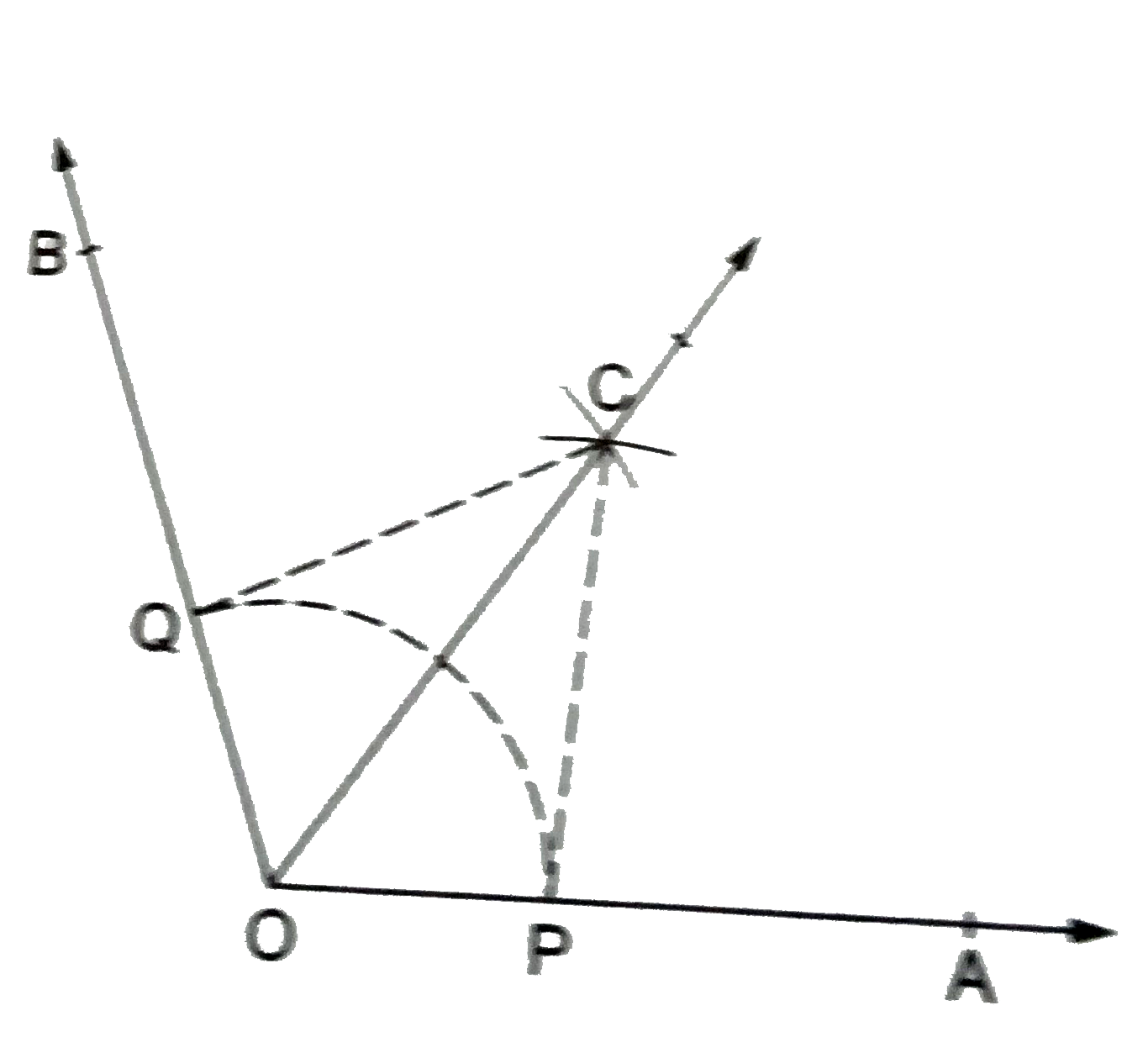InterviewSolution
Saved Bookmarks
| 1. |
Draw an angle of 110^(@) with the help of a protractor and bisect it. Measure each of these angles. Justify your answer. |
|
Answer» Solution :STEPS OF CONSTRUCTION (i) Draw `angleAOB=110^(@)` with the help of a protractor. (ii) With `O` as centre and a convenient radius, draw an arc CUTTING `OA` at `P` and `OB` at `Q.` (iii) With `P` as centre and a convenient radius, draw an arc. (iv) With `Q` as centre and with the same radius, draw another arc, cutting the PREVIOUS arc at a point `C.` (v) Join `OC` and produce it beyond `C`. Then, `OC` is the required bisector of `angleAOB`  Verification : On measuring `angleAOC` and `angleBOC` you will find that `angleAOC=55^(@)` and `angleBOC=55^(@)`. Thus, `angleAOC=angleBOC=55^(@)` and therefore, OC is the bisector of `angleAOB`. Justification : Join CP and CQ. In `Delta OPC` and `Delta OQC`, we have `OP=OQ` (RADII of the same arc) `PC=QC` (arcs of equal radii) `OC=OC` (common) `:. Delta OPC cong Delta OQC`. Hence, `anglePOC=angleQOC` (c.p.c.t.). CONSEQUENTLY, OC is the bisector of `angleAOB`. |
|